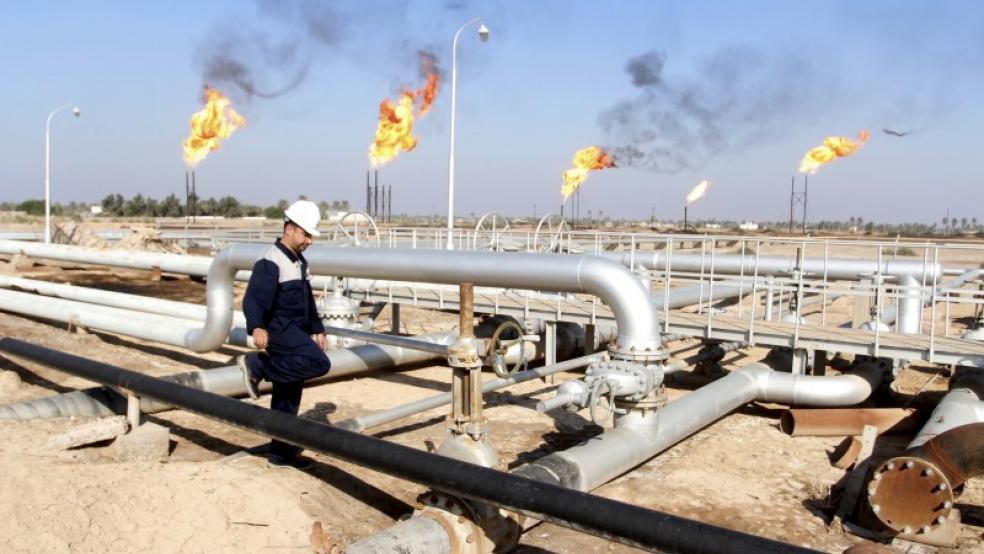It’s hard to say who pounced more quickly, the Iranians or the rest of the world, when punishing international sanctions were lifted last month. In a matter of days, the Islamic Republic is back in business.
As expected, the European Union was flying exploratory trade missions to Tehran months before the accord was signed last July.
But American businesses aren’t going to party with the Iranians along with the Europeans, Russians, and Chinese. US companies, it turns out, are constrained by lingering restrictions and the still-quarrelsome atmospherics between Washington and Tehran.
Related: Here’s the Bomb the US Hopes It Never Has to Use Against Iran
Plainly enough, we’re watching another case of ideologically driven American policies working against on-the-ground American interests. The Obama administration didn’t invent this contradiction, fair to say, but it has worsened over the past seven years.
Europeans and the leading non-Western economies bear no such baggage. Here’s what this looks like just two weeks after Iran was formally declared in compliance with the July agreement and sanctions were officially lifted:
• On Thursday, Iran contracted to buy 118 planes from Airbus Industrie, the cross-border European manufacturer, for $25 billion. The deal also covers pilot training, airport operations, and air-traffic management. Airbus will need U.S. export licenses to cover American-made components. Washington could withhold these, in my estimation, only at the risk of a lot of bad blood across the Atlantic.
• Sputnik, the Russian news service, quoted a senior civil aviation official Friday saying that Iran will begin “very soon” to purchase Sukhoi Superjet-100 passenger planes from the Russian manufacturer. There have been reports since last autumn that Sukhoi is also in talks to sell the Iranian air force a fleet of Su-30 fighter jets.
Related: Kerry Just Confirmed the GOP's Worst Fears About the Iran Deal
• Daimler, the German vehicle maker, just signed letters of intent with two Iranian firms, Khodro Diesel and the Mammut Group, to resume assembly of Daimler trucks in Iran after a six-year hiatus. Khodro simultaneously signed a $430 million production deal with Peugeot-Citroën.
• Aéroports de Paris and Bouygues, the French construction giant, have agreed to participate with Iranian firms in the construction of a new terminal at the Tehran airport—a $2.8 billion deal—and in renovations and management at the airports in Mashhad and Isfahan, the nation’s second- and third-largest cities.
• Over the weekend the Financial Times reported that British banking regulators just started an agency to help Iranian institutions—long frozen out of international markets—to reintegrate. This seems a potentially ominous sign given that Treasury continues to bar U.S. banks, which are by tradition essential in global transactions from handling Iranian money.
Other marquee agreements: Danieli, the Italian metal fabricator, has a new contract to supply $6 billion worth of heavy machinery; Saipem, the Italian oil and gas contractor, has a $4 billion deal to bring decrepit Iranian refineries back to life.
Many of these deals were formally concluded during President Hassan Rouhani’s high-profile swing through Italy and France last week. The reformist who led Iran into the nuclear accord finished up with $40 billion in new business commitments.
Related: Here’s How Iran Will Rejoin the Global Financial System
“France is available for Iran,” Prime Minister Manuel Valls said during the Rouhani visit. That’s to speak for all of Europe, but then there are non-Western nations.
Given Russia’s historical advantage by way of a long, complex relationship with Iran, the Sukhoi deals are somewhat expected. Nalco, India’s state-owned aluminum smelter is in talks to build a $2 billion plant for the Iranians, and this, too, is sure to prove a first-of-many.
Xi Jinping, the first head of state to visit Iran after sanctions were lifted, returned to Beijing with 17 investment and cooperation agreements, a commitment to increase trade tenfold, to $600 billion, and plans to integrate Iran into its ambitious Silk Road project, which is to connect China to the Middle East and the Mediterranean.
Where, oh where, are the Americans, you have to ask.
There are two answers. One, the Obama administration’s insistence that the nuclear pact would bear no wider implications leaves in place many sanctions-related restrictions on business and banking. The imposition of new restrictions because of Iran’s ballistic missile violation forced President Obama and Secretary of State Kerry to make as little as possible of the accord, and American companies now suffer the consequences.
Related: 4 Reasons to Worry About Iran's Oil Coming to Market
Two, so long as high-pitched political opposition to the accord continues—not least among Republican presidential aspirants—the investment climate will remain too uncertain. The action in Iran is in oil and gas, heavy industry, and big-ticket capital equipment. CEOs have to know their country “is available to Iran,” as Manuel Valls put it, to take a seat at this table.
It’s early days in Iran’s return to the global community but we may well be watching shifts of historic significance.
From the C.I.A.’s 1953 coup until the 1979 revolution, U.S. influence was dominant in Iran. It looks now as if the Europeans have at least a chance to re-assume something of their prewar position. We’ll have to wait to see.
Far more certainly, Russia and China are now announcing the non-West as a credible alternative source of capital, industrial investment, technology transfer, and manufactures for the Iranians. Over time, this is sure to play out in political, diplomatic, and strategic terms, too.






